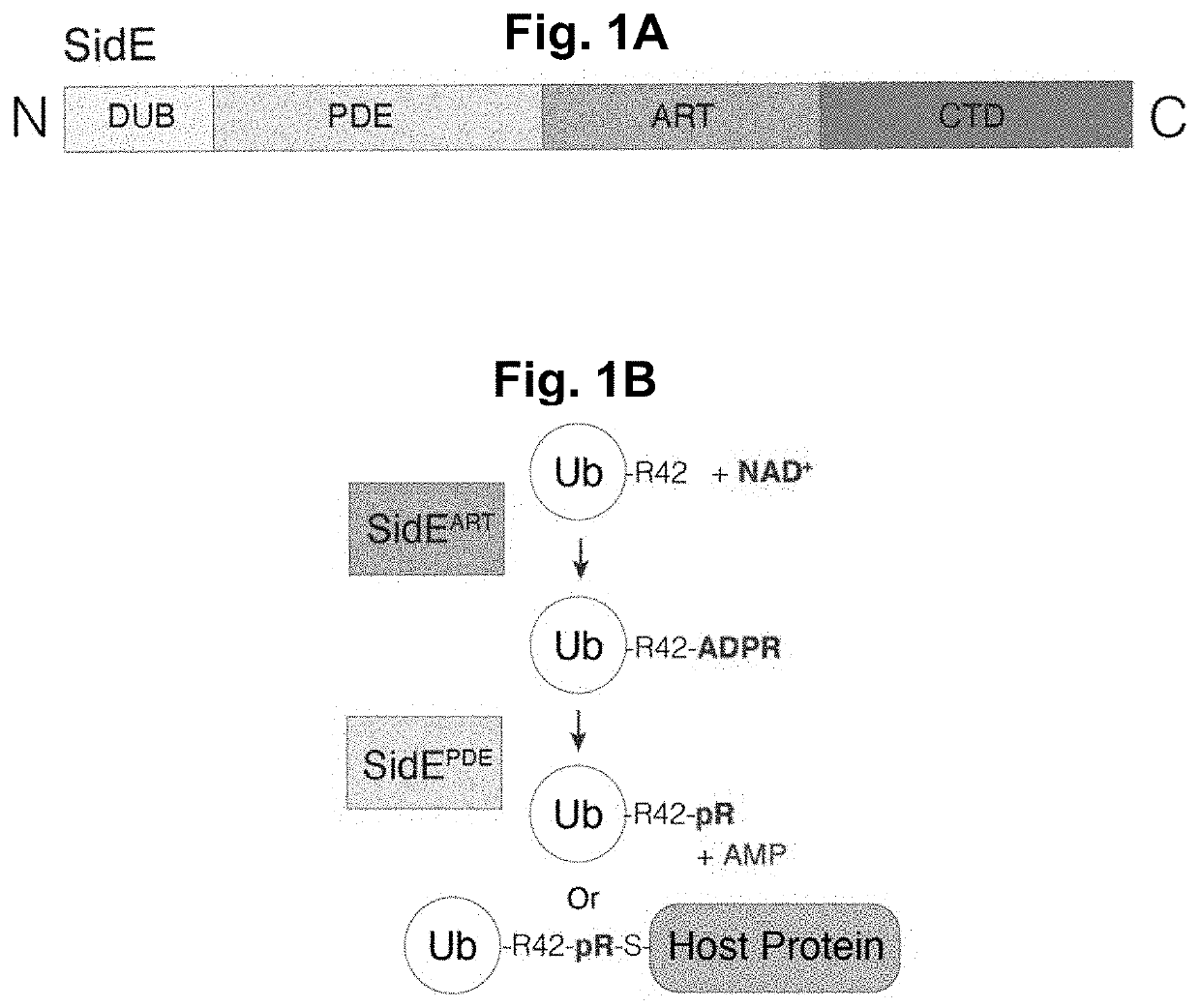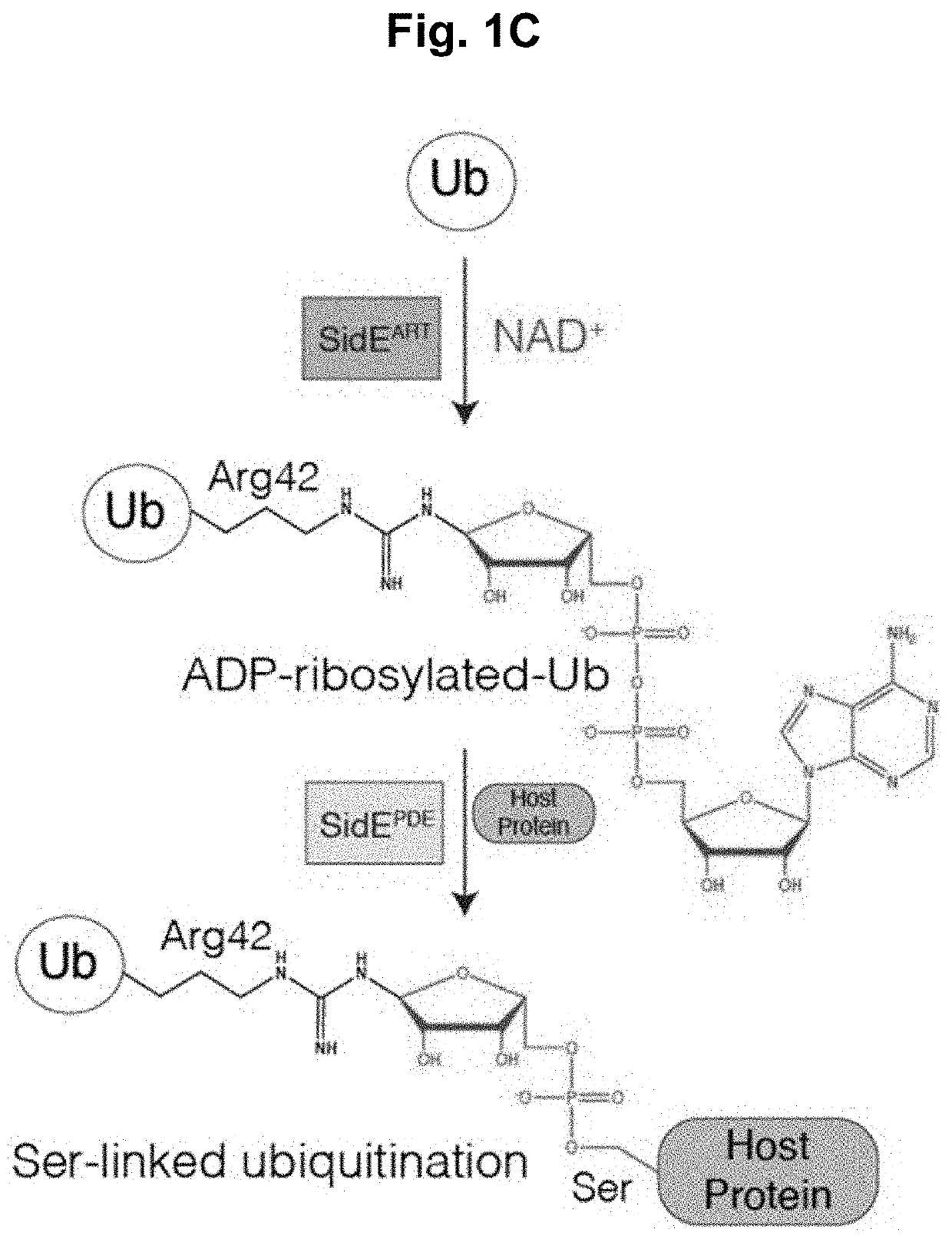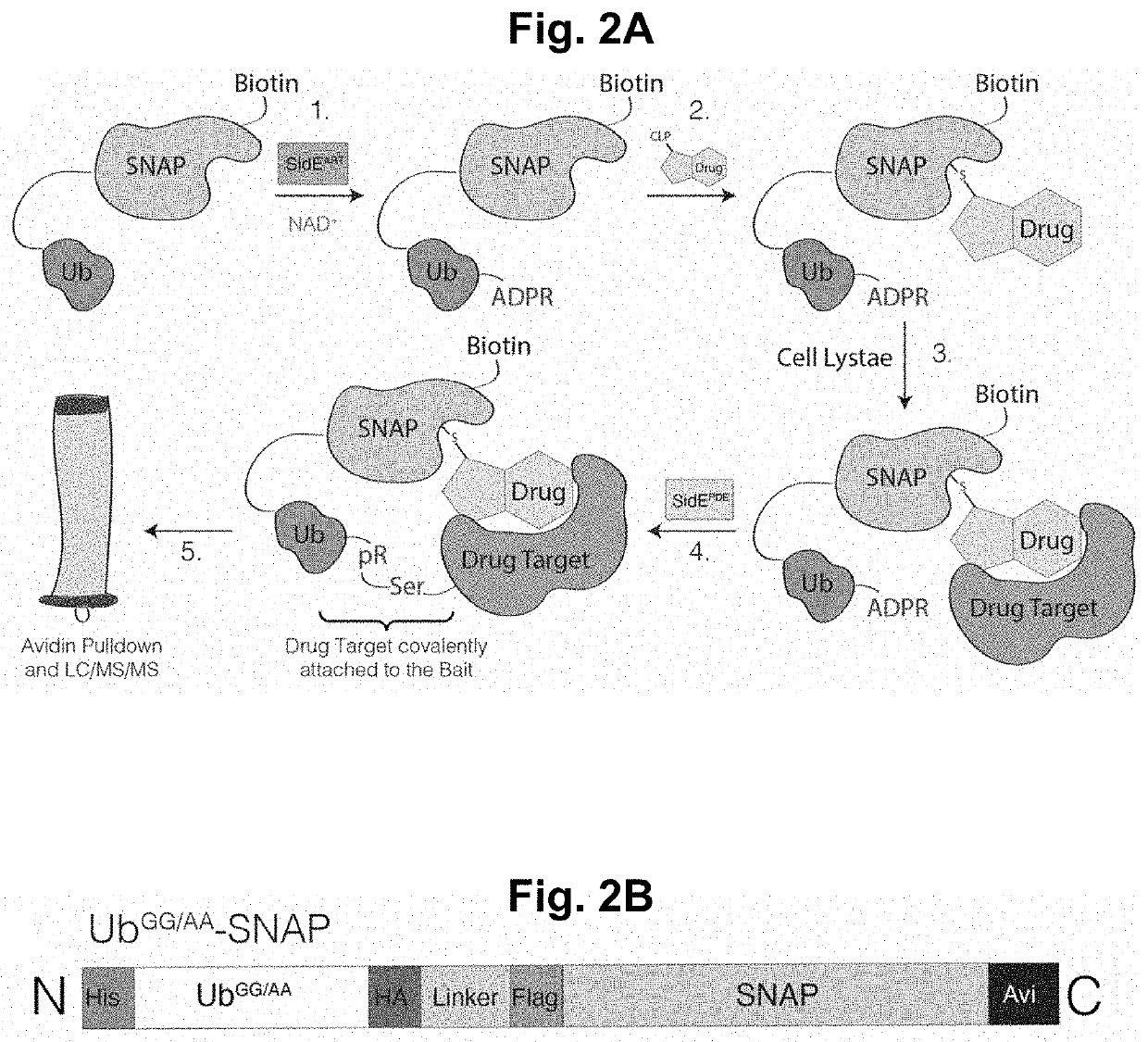Methods and compositions for detecting protein targets
a protein target and protein technology, applied in the field of protein target detection methods and compositions, can solve the problems of not being able to evolve into clinical candidates, not being able to identify transient or low-affinity interactions, so as to facilitate the identification of final targets and improve de novo discovery of therapeutics
- Summary
- Abstract
- Description
- Claims
- Application Information
AI Technical Summary
Benefits of technology
Problems solved by technology
Method used
Image
Examples
examples
[0117]The following examples are included to demonstrate preferred embodiments of the disclosure. It should be appreciated by those of skill in the art that the techniques disclosed in the examples that follow represent techniques discovered by the inventor to function well in the practice of the present disclosure, and thus can be considered to constitute preferred modes for its practice. However, those of skill in the art should, in light of the present disclosure, appreciate that many changes can be made in the specific embodiments which are disclosed and still obtain a like or similar result without departing from the spirit and scope of the present disclosure.
Introduction to Examples 1-3
[0118]Small molecule drugs are widely used in the treatment of a large variety of diseases. Despite the efficacy of these small molecules, a surprising number of them lack known mechanisms of actions or identified targets. Identifying the targets of these orphan compounds is nontrivial and prese...
example 1
n of SidBait Constructs
[0123]The SidE-family of ubiquitin (Ub) ligases are type 4 secretion system effector proteins found in the Gram-negative human bacterial pathogen Legionella pneumophila, the causative agent of Legionnaires' disease in humans. The SidE-family consists of four functionally redundant proteins (SdeA, SdeB, SdeC and SidE) that contain an N-terminal deubiquitinase domain, an HD-like phosphodiesterase (PDE) domain, an ADP Ribosyltransferase (ART) domain and a C-terminal domain (CTD) containing a coiled coil region (FIG. 1A). The SidE effectors catalyze the covalent addition of Ub to serine (Ser) residues on host proteins independent of the cellular E1 and E2 Ub conjugating enzymes. The first step in this reaction requires the SidE ART domain, which binds cellular NAD+ and transfers an ADP ribose to an internal Arg residue on Ub (Arg42). ADP-ribosylated Ub acts as a substrate for the PDE domain, which hydrolyzes the phosphodiester bond in ADP ribose and, when a host p...
example 2
ization of SidBait Constructs
[0131]Intact mass analysis was next performed on SidBait. Briefly, protein samples (UbGG / AA-SNAP and UbGG / AA-SNAP treated with SdeAART and E. coli BirA to generate SidBait) were analyzed by LC / MS, using a Sciex X500B Q-TOF mass spectrometer coupled to an Agilent 1290 Infinity II HPLC. Samples were injected onto a POROS R1 reverse-phase column (2.1×30 mm, 20 μm particle size, 4000 Å pore size), desalted, and the amount of buffer B was manually increased stepwise until the protein eluted off the column. Buffer A contained 0.1% formic acid in water and buffer B contained 0.1% formic acid in acetonitrile. The mobile phase flow rate was 300 μL / min. The mass spectrometer was controlled by Sciex OS v.1.6.1 using the following settings: Ion source gas 1 30 psi, ion source gas 2 30 psi, curtain gas 35, CAD gas 7, temperature 300° C., spray voltage 5500 V, declustering potential 80 V, collision energy 10 V. Data was acquired from 400-2000 Da with a 0.5 second accu...
PUM
| Property | Measurement | Unit |
|---|---|---|
| length | aaaaa | aaaaa |
| size | aaaaa | aaaaa |
| physiological equilibriums | aaaaa | aaaaa |
Abstract
Description
Claims
Application Information
 Login to View More
Login to View More - R&D
- Intellectual Property
- Life Sciences
- Materials
- Tech Scout
- Unparalleled Data Quality
- Higher Quality Content
- 60% Fewer Hallucinations
Browse by: Latest US Patents, China's latest patents, Technical Efficacy Thesaurus, Application Domain, Technology Topic, Popular Technical Reports.
© 2025 PatSnap. All rights reserved.Legal|Privacy policy|Modern Slavery Act Transparency Statement|Sitemap|About US| Contact US: help@patsnap.com



